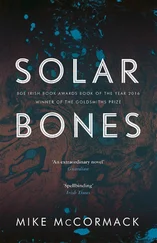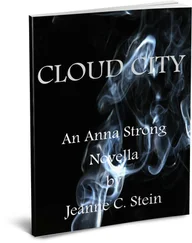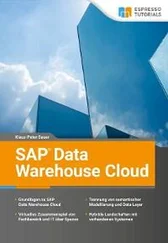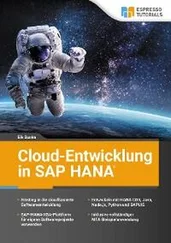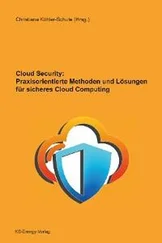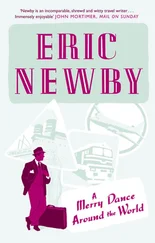Sam wasn’t reacting, so I just kept on talking. I told him her name was Miriam Galt and that he probably knew her. She lived up at Duncairn Manor with her father, a strange old man.
Something in the way Sam was looking at me with those big green eyes was already beginning to worry me. But I kept babbling on about love and how it had transformed me. Without saying it outright, I implied that the love between Miriam and me was the rarest of things and how awful it must be for others not to have such a love as ours — a special, magical kind of love that would last forever.
In the midst of this torrent, Sam placed his toy cup down carefully on its toy saucer.
“You can’t marry Miriam Galt,” he said. “You can’t marry her because she’s my fiancée. Yesterday when I came home, I went up to the manor to see her and we finalized the date of our wedding. That’s really why I’m here. She made me promise to come and tell you about it this morning.”
I left him in Mackenzie’s Café and headed straight for the manor. I needed to talk to Miriam, to hear her contradict this absurdity.
As I half-ran across the moors, rain began pouring down so that by the time I reached the manor, I was soaked through. I knocked at the door and waited. No answer. I knocked again, louder. No answer. I pounded on the door and shouted, “Miriam! Miriam!” over and over. No answer. I stood back and roared her name at the house itself.
The curtains of the window just above the door were slowly drawn apart by Miriam Galt. With her arms still extended she stared down at me for a time, her face expressionless. Then she drew the curtains together again, as though at the end of a performance.
I stood for a while in a state of shock. I felt like one of those ancient warriors I’d read about, pierced by a spear and knowing that if he pulls it out, he’ll die. Then I began to make my way back down through the lashing rain towards Duncairn, which now seemed to me the most inhospitable of places. A few hours ago, I’d almost convinced myself I was as happy as a man could ever be. Now I was sure I’d never be happy again.
AT DAWN THE next morning, after a dismal night, I furtively slipped down the stairs into the street. A thick fog that made the world insubstantial suited my mood. I hurried to Duncairn Station with my meagre possessions stuffed in a canvas bag. I bought a ticket for the first train to arrive and found an empty compartment aboard. As it steamed away from the station, headed south, I could see almost nothing of Duncairn through the window for the swirling fog.
Thus, broken-hearted, I left Miriam Galt and Scotland behind me forever.
Time is what prevents everything from happening at once.
John Archibald Wheeler
A LETTER FROM THE CURATOR
So, all these years later, imagine my astonishment, in the seedy Bookstore de Mexico in La Verdad, at the sight of that name Duncairn on the title page of The Obsidian Cloud . How could I not acquire the book? A full month had passed since I’d sent it to the National Cultural Centre in Glasgow, and I’d heard nothing from the rare books curator. I was beginning to get impatient. Surely he’d have read it by now and either been impressed or not. Was the book of consuming interest only because of the spell that name had cast on me? Not that I really believed in magic, but if there were such things as a black magic and a white magic, the name of that little town represented both for me— there, I’d both fallen completely in love and been devastatingly rejected.
Then one morning before breakfast the mailman delivered a letter with the heading National Cultural Centre of Scotland embossed on the envelope. I quickly read the typed note inside.
Dear Mr. Steen:
Re. The Obsidian Cloud.
I’m afraid it has taken us even longer than I’d expected to deal with this item. You’ll be gratified to know, however, that we have made a number of most interesting discoveries about the book. When we have completed the remainder of our inquiries, I will, of course, send the results to you.
I can already say this: we at the Rare Books department already consider The Obsidian Cloud to be a Scottish literary curiosity of some distinction. I, personally, am delighted you entrusted the search for its provenance to us. I dare to hope you will ultimately consider donating this unique book to our collection.
As for your financial gift of some months ago to our centre: on behalf of our Board of Trustees, I should like to convey to you our deepest appreciation.
Yours, etc.
Doctor Neale Soulis, Ph.D. (Bibliophagy)
Curator of Rare Books
National Cultural Centre of Scotland
Of course, I was elated that my judgment of the book’s interest hadn’t been entirely subjective. But this Dr. Soulis, the curator, hadn’t given much away in his letter, so I couldn’t restrain myself and decided to phone him. In spite of the time difference, I managed to catch the man himself at his desk.
“Mr. Steen,” he said when he realized who I was. “How good of you to call.”
He had quite a loud voice and sounded much more enthusiastic than when I’d first phoned him about the book. I told him how excited I was about his letter.
“Believe me, we’re excited too,” he said. “Let me say again, I’m so glad you sent the book to us. I assure you, we get dozens of requests from people every month to examine literary works that turn out to be quite worthless, at least from the standpoint of rare books. I’ve got to the stage where I often tell them we’re too busy to accept any more items at the moment. In your case, that would have been a real blunder.”
I was pleased to hear that and pressed him for information. What were these “interesting discoveries” he’d made? For instance, did that visitation of the weird mirror cloud really happen?
But Curator Soulis obviously had different priorities.
“Oh, we haven’t even begun that kind of research yet,” he said. “I’m afraid you’ll have to be patient with our methods. What’s really attracting our attention at the moment is the format of the book.”
Format? I suppose my disappointment came through over the phone, for he laughed.
“Of course, only a specialist in the history of printing could be expected to appreciate how interesting and unusual its format is,” he said. “ The Obsidian Cloud has several characteristics that in themselves make it a noteworthy piece of work from the period. We’re not familiar with its printer, so we’re in the midst right now of attempting to trace the firm and any possible records of the printing.”
So he hadn’t found out anything about whether the incident actually happened?
“Not as yet,” said the curator. “But we will get to it eventually, Mr. Steen — please don’t worry. For now we have a number of other avenues we need to explore before we dig into the matter of the book’s actual contents.”
At that point the most awful noise was coming from the phone, so much so that I thought something had gone wrong with the line. I couldn’t hear what Soulis was saying and was about to hang up and redial when the background noise stopped. Soulis’s voice was quite clear again, though he was shouting so loudly I had to hold the receiver away from my ear.
“I just want to assure you I’ll keep you apprised of all our findings in due course,” he shouted. “By the way, when you first phoned you told me you’d been in Duncairn years ago. Out of curiosity, may I ask what exactly you were doing there?”
I gave him a brief account of how I’d stayed only a few months, theoretically preparing to teach school. In the end, it hadn’t worked out and I’d moved on. Naturally, I didn’t mention Miriam Galt.
Читать дальше

